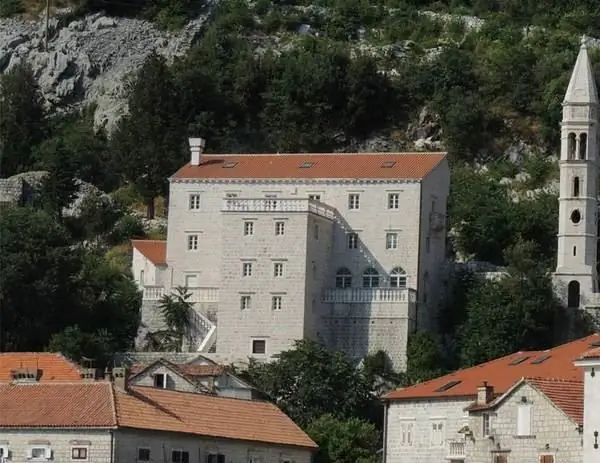
Description of the attraction
In the north-west of Perast, the imposing palace of the Zmayevichs attracts the attention of travelers, on the territory of which there is a chapel with an arrow-bell tower. The temple was built next to the mansion for a reason: several of its owners were bishops. This is probably why the locals unofficially call this palace complex Biskupia, that is, the House of the Bishop.
The Zmayevich family belonged to the most respected families of Perast. Probably the most famous representative of this surname is Matiya Zmayevich, who was waiting for a brilliant career, however, abroad - in Russia. He entered the service of Emperor Peter the Great and received the title of admiral of the fleet for numerous services. Matiya Zmaevich was buried in Moscow, but at home he was not forgotten, having erected a monument in his honor.
The construction of the Zmayevich Palace was completed in 1664, as announced by a plaque on the facade. The building is decorated in a baroque style, which was just then becoming fashionable among the local nobility. The central part of the palace protrudes strongly forward. In this unusual way, the architect played with the already existing building - an old tower, which was supposed to be part of the palace complex. Two small identical wings were attached to this tower. You can climb to the entrance to the palace by a wide broken staircase.
Near the palace, by order and, as some historians believe, according to the project of Andriy Zmayevich, Archbishop of Bar, a chapel with an expressive bell tower was erected in 1678. It became the burial place of some members of the Zmaievich family.






